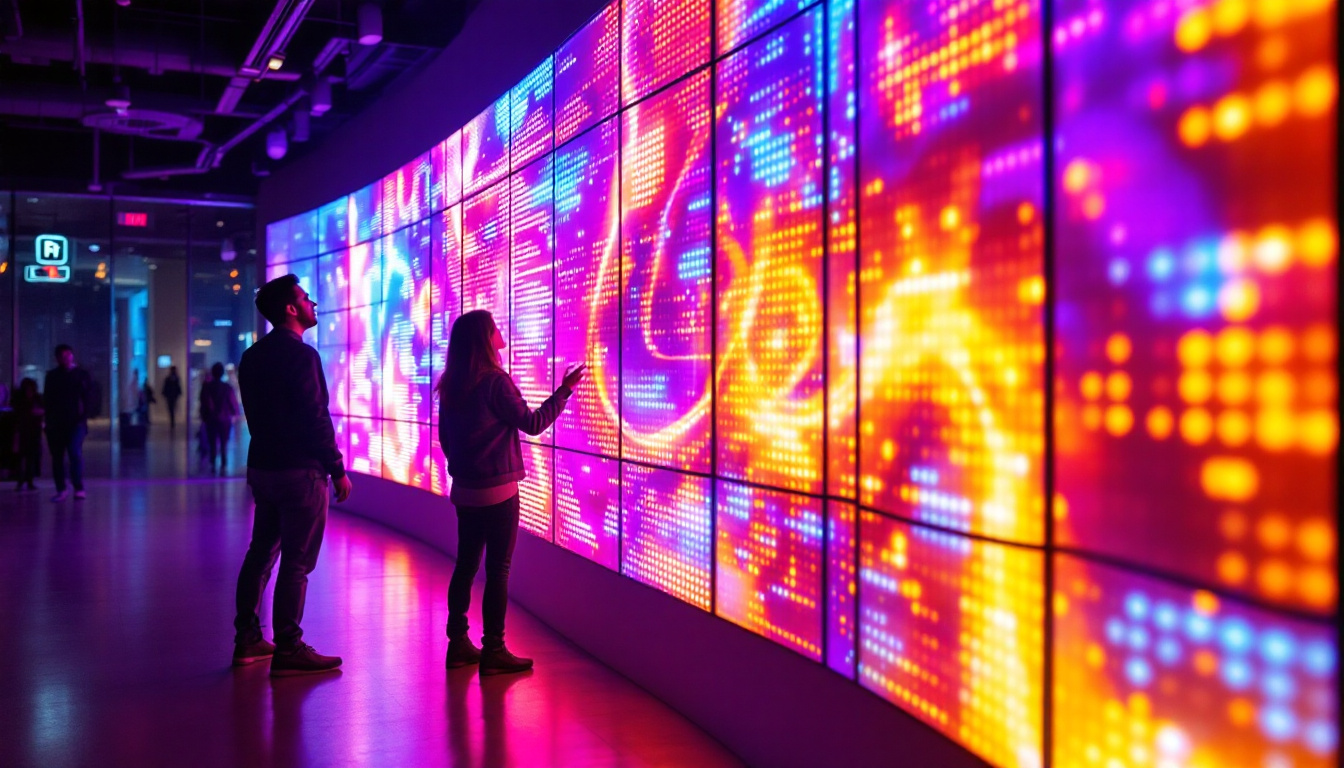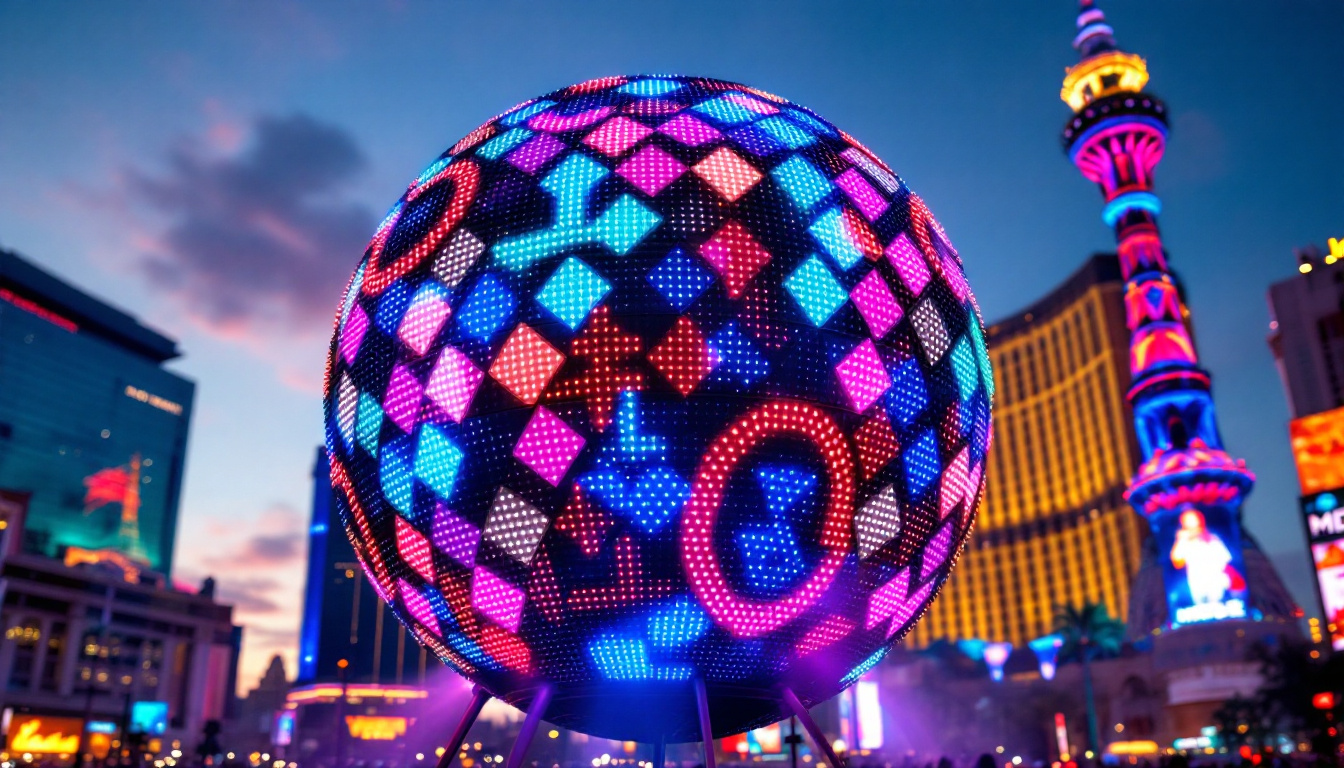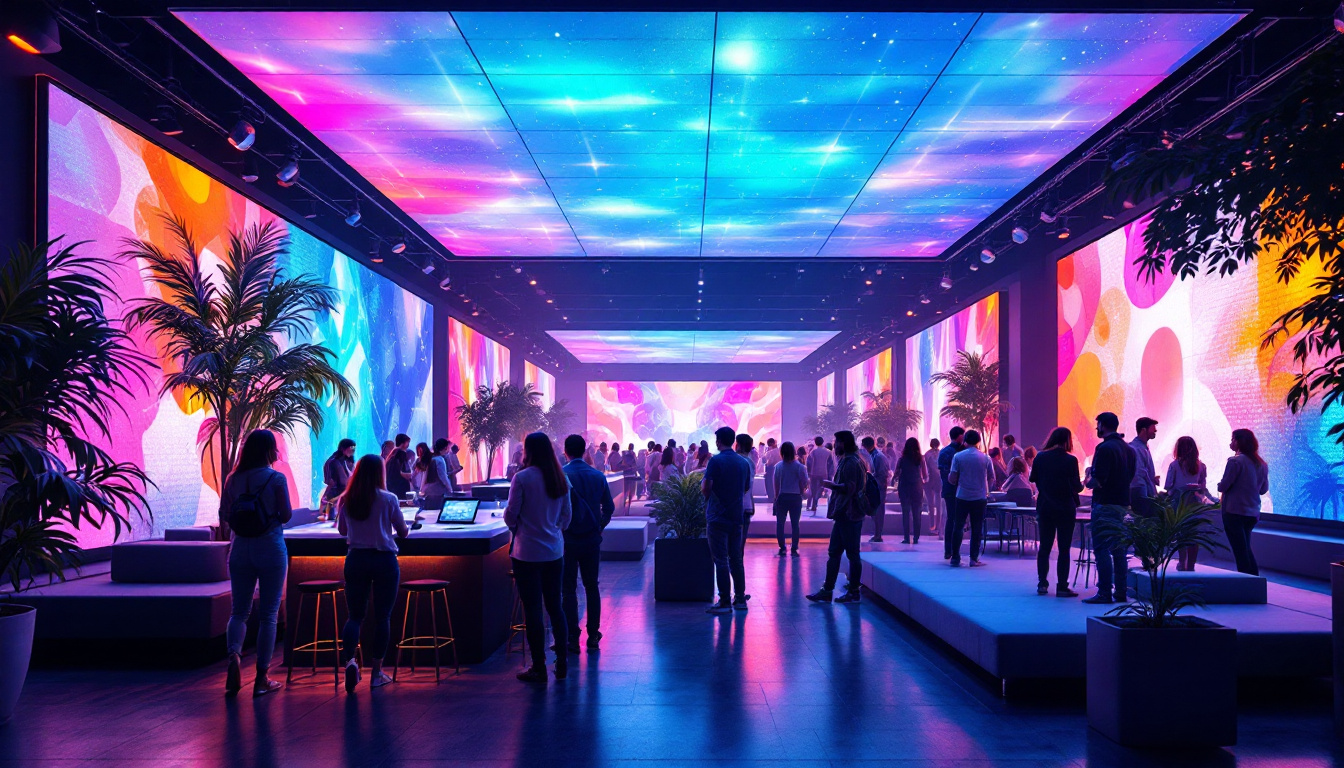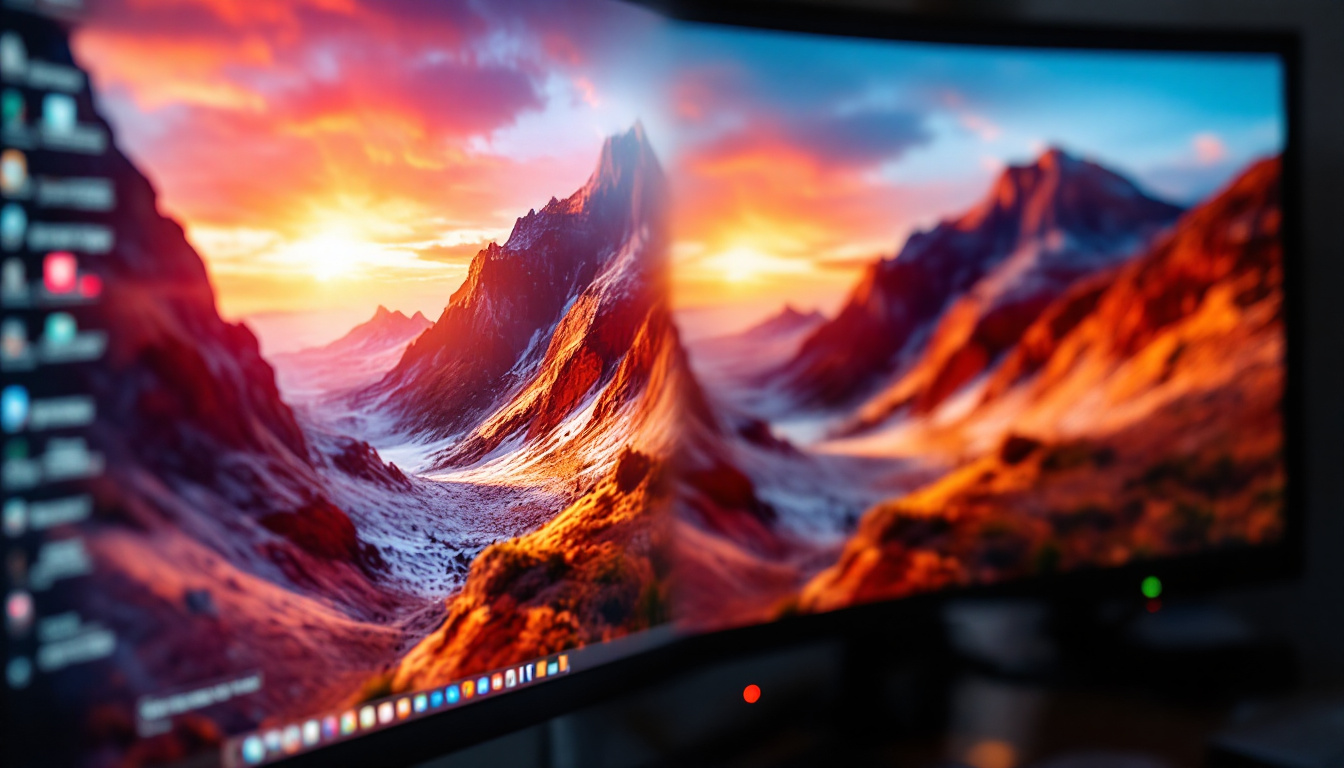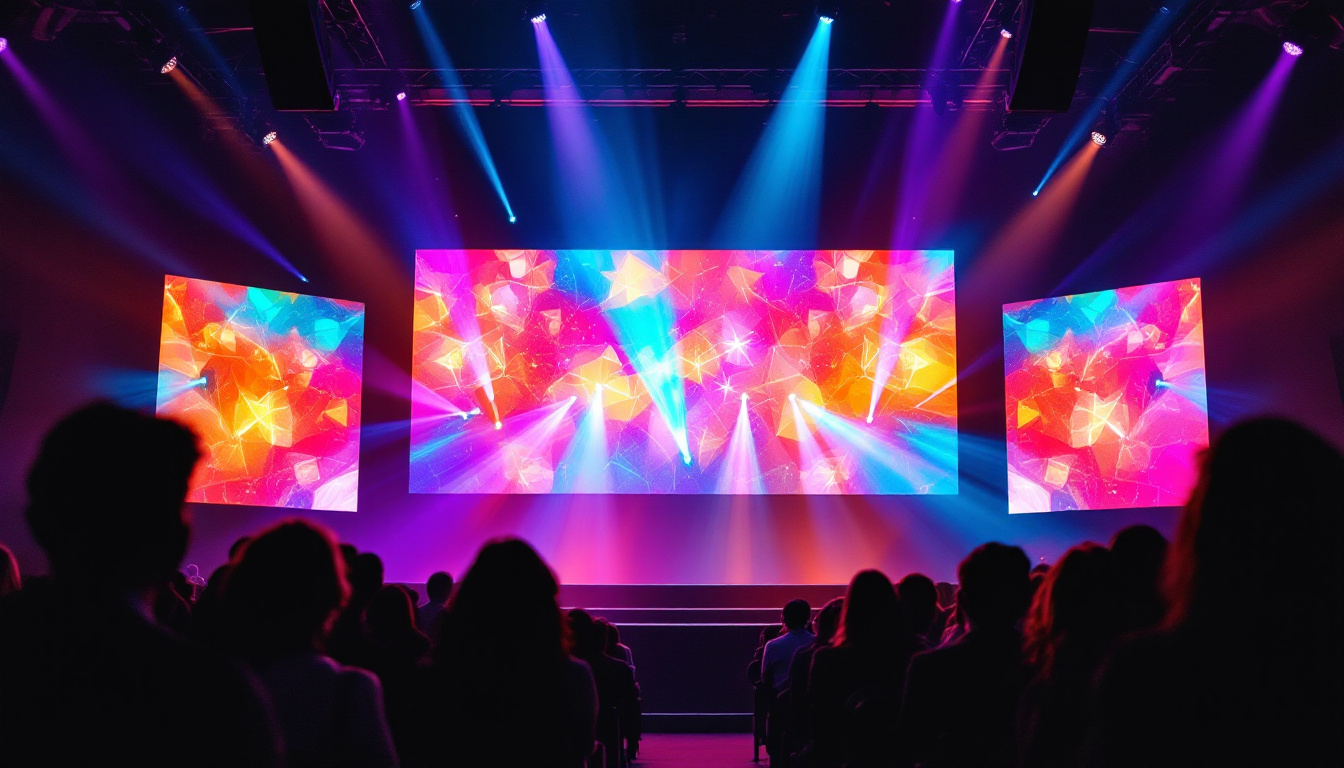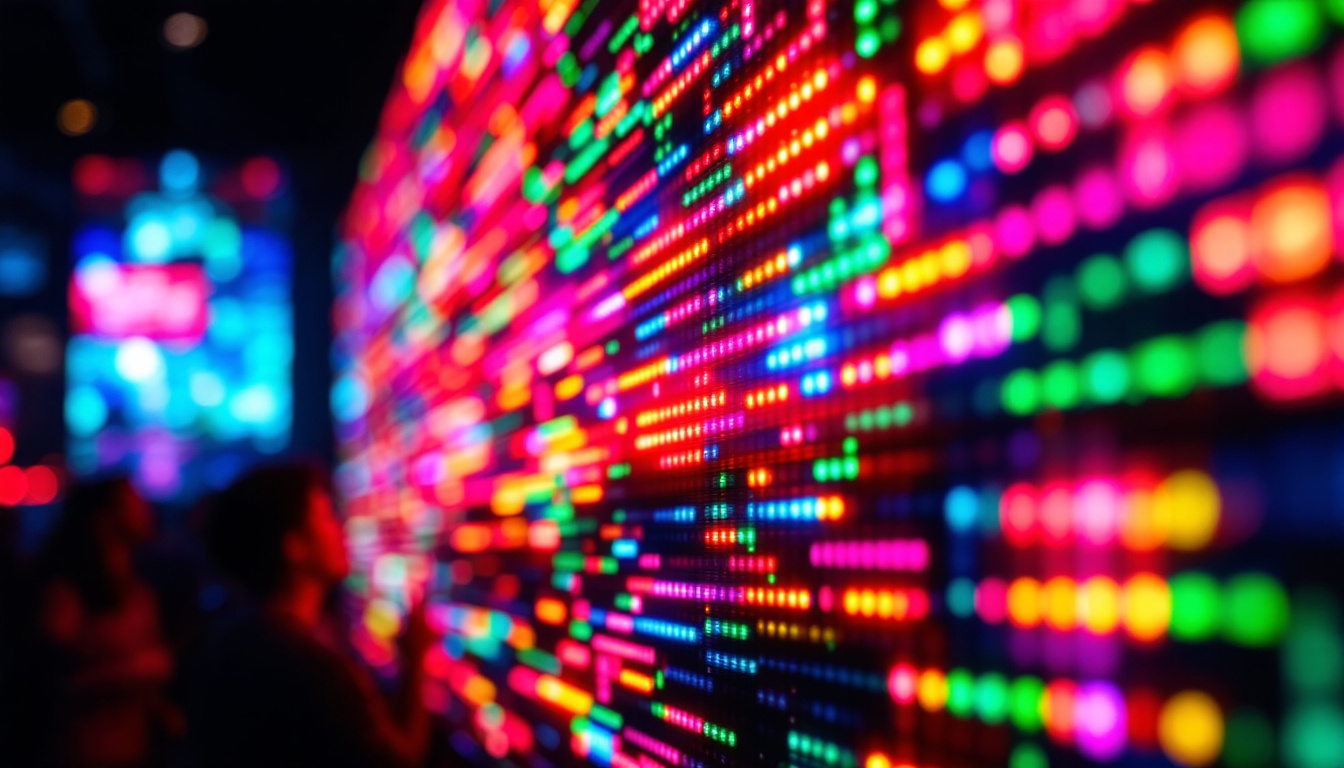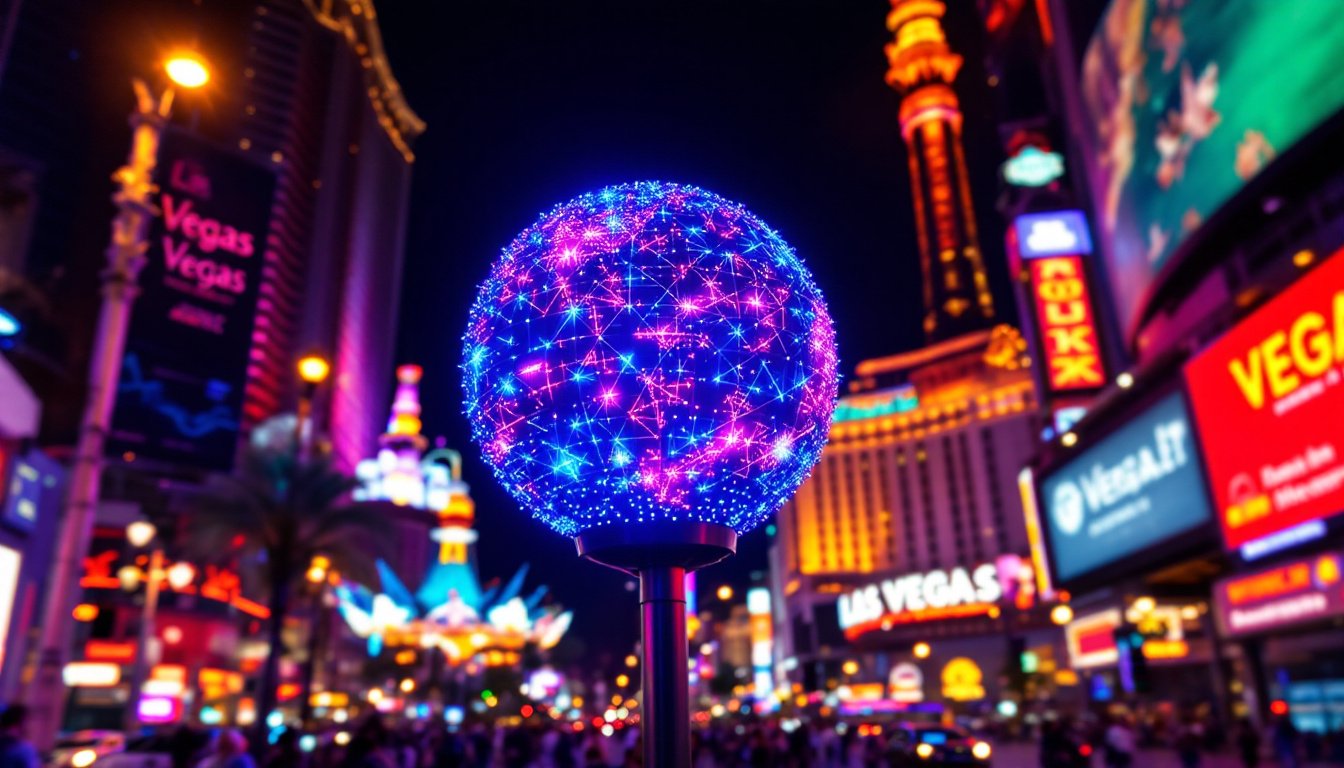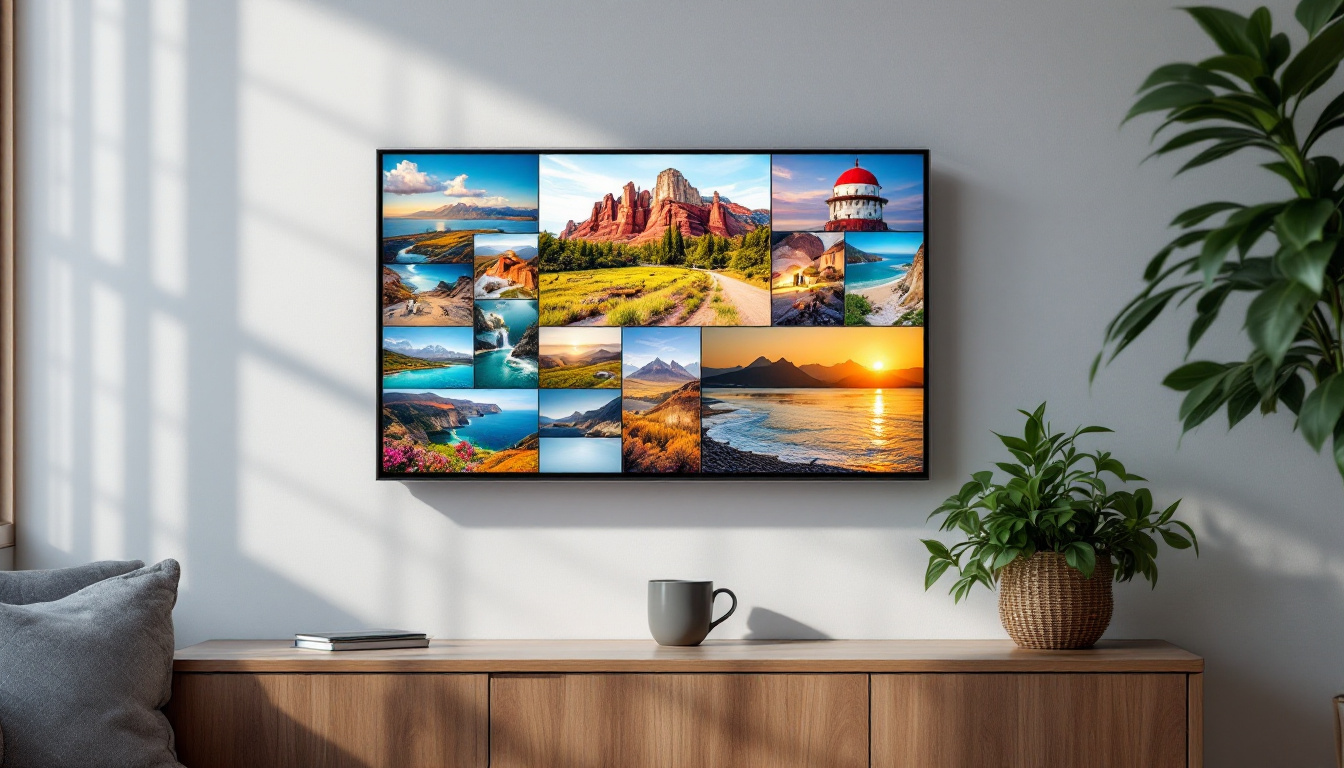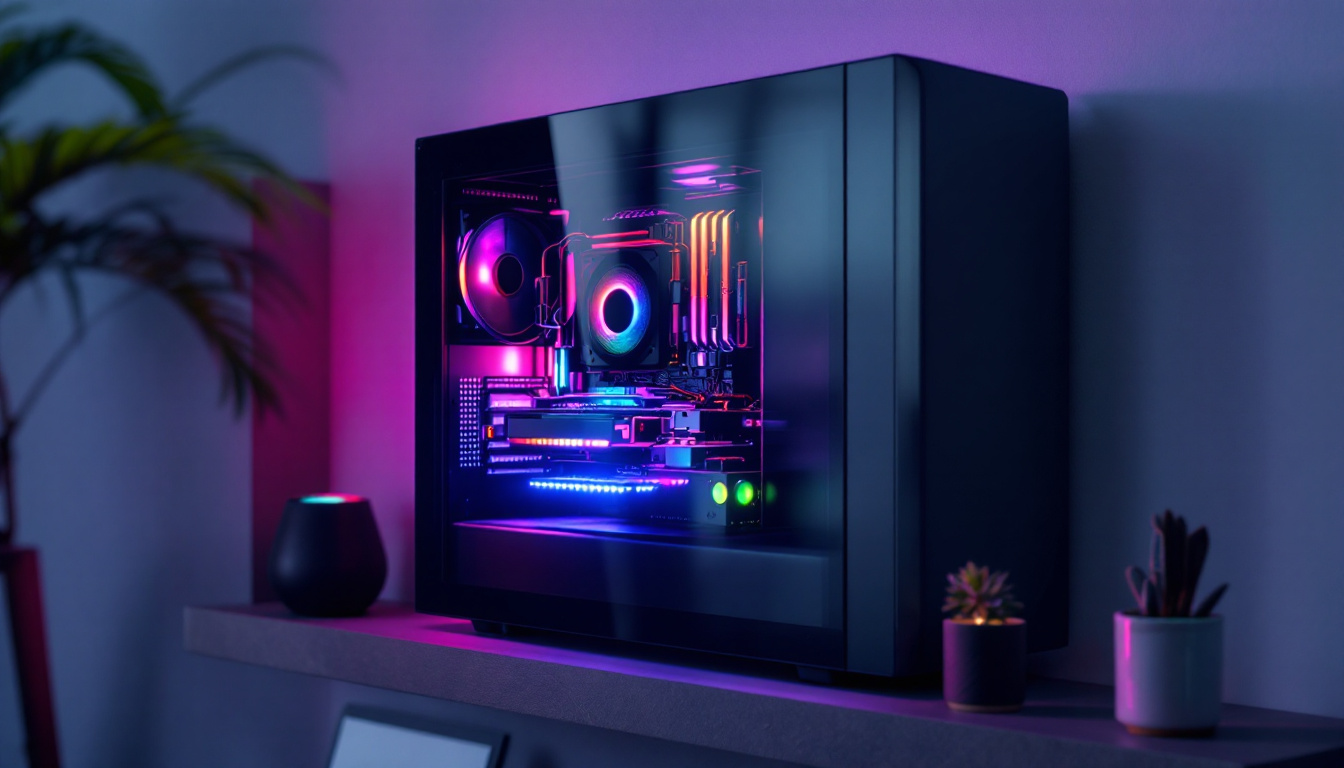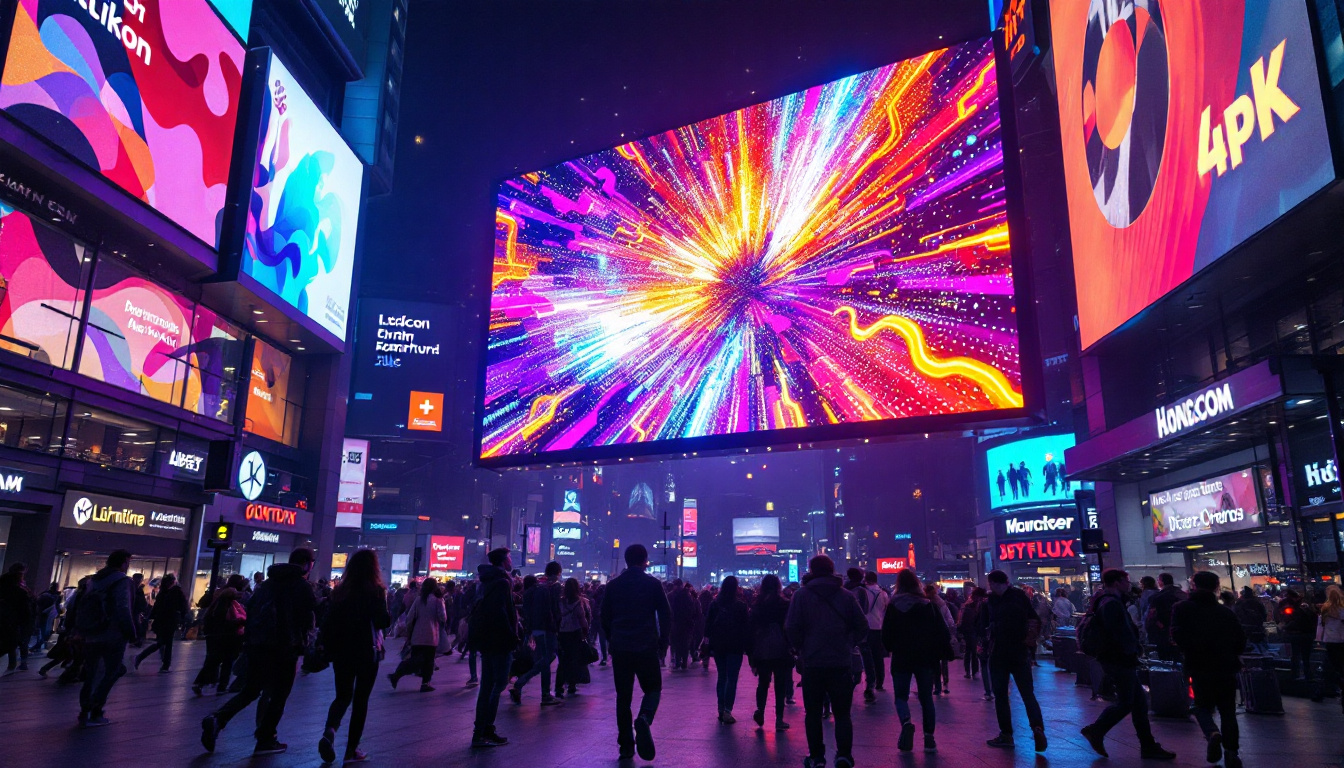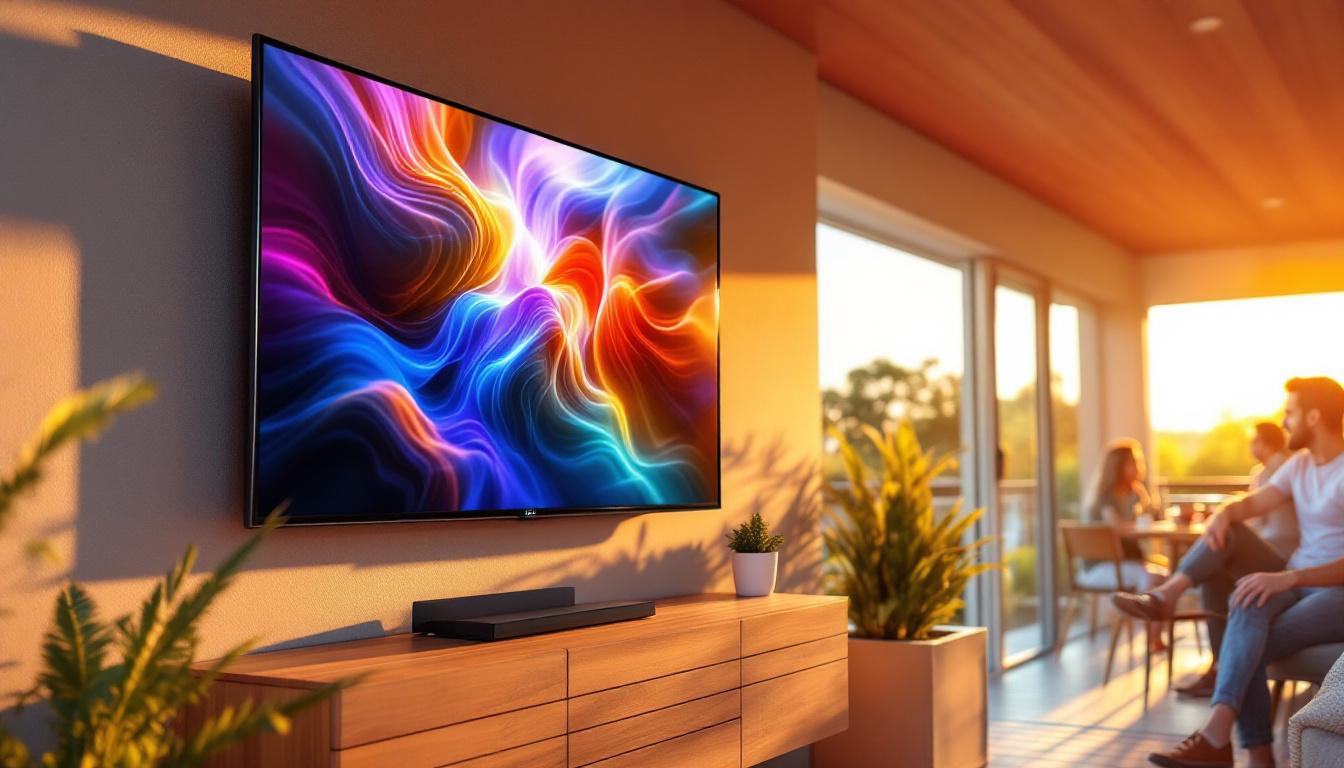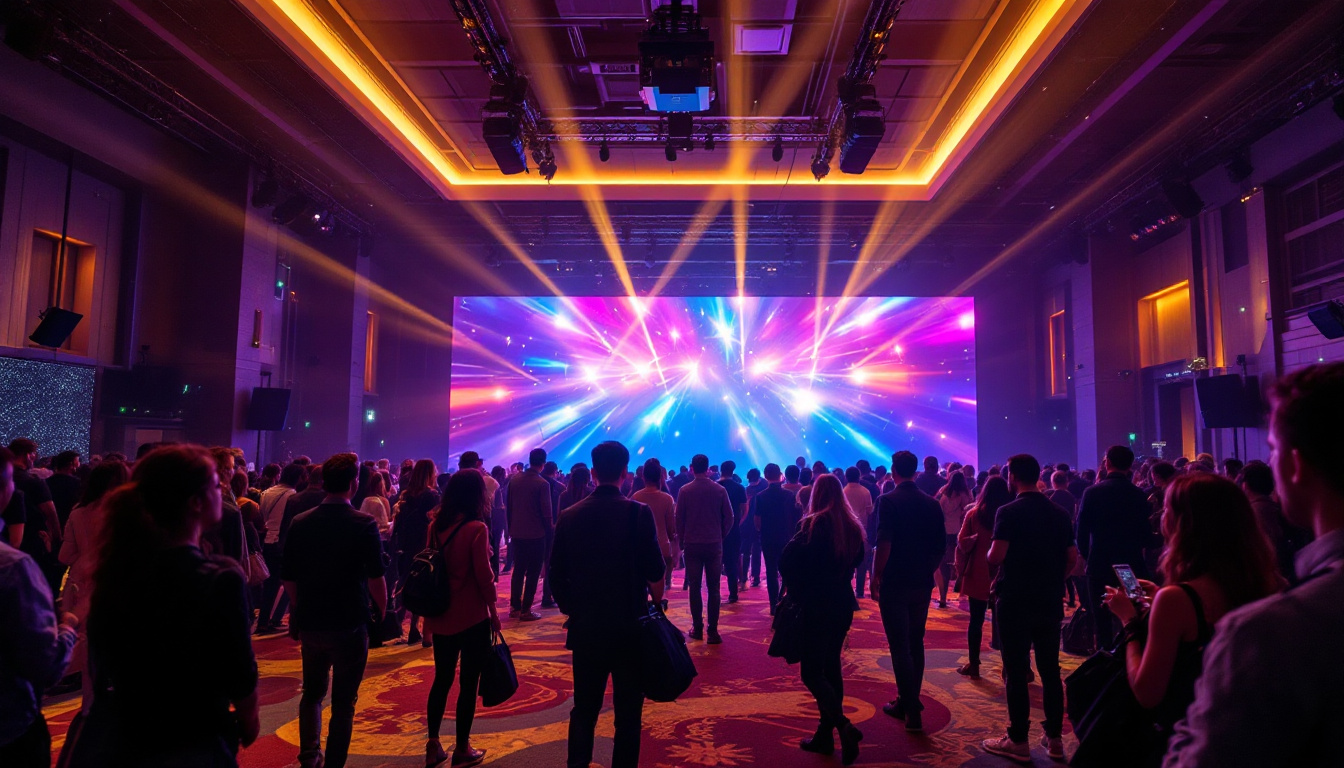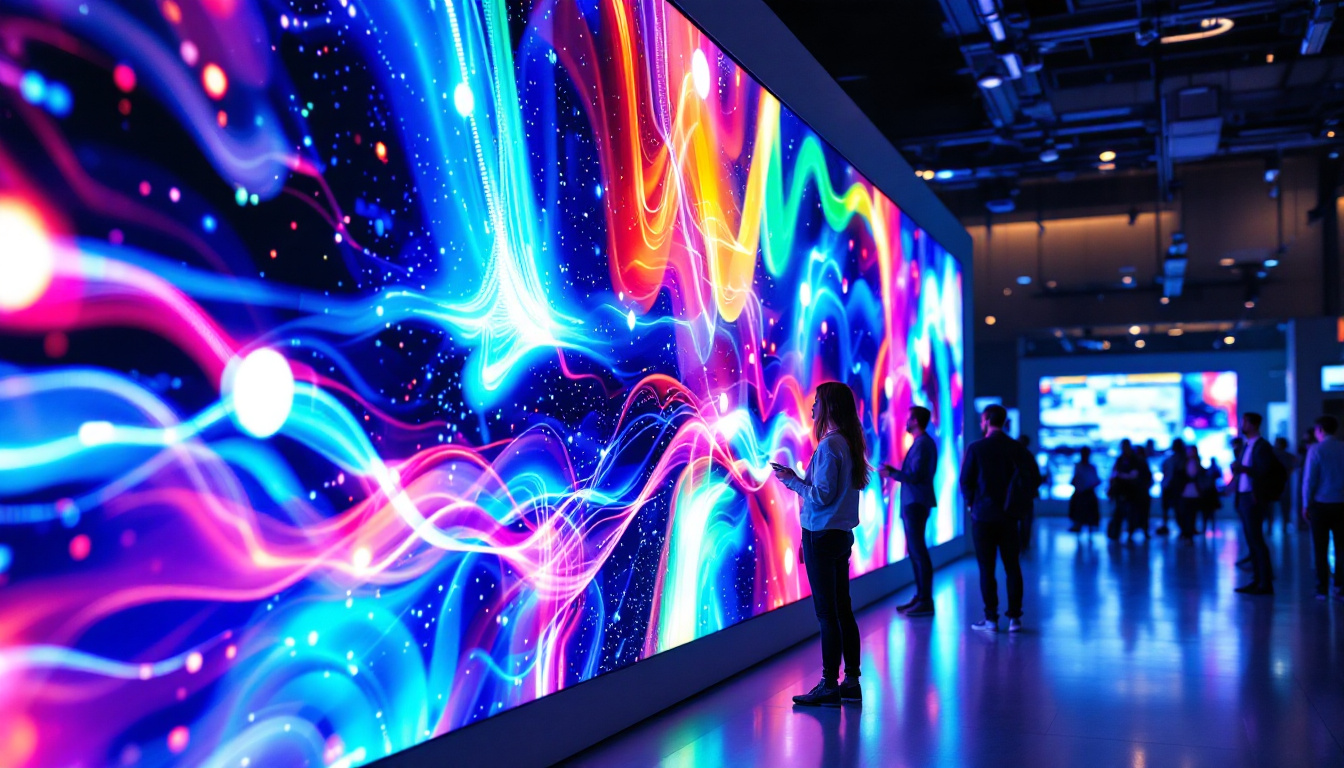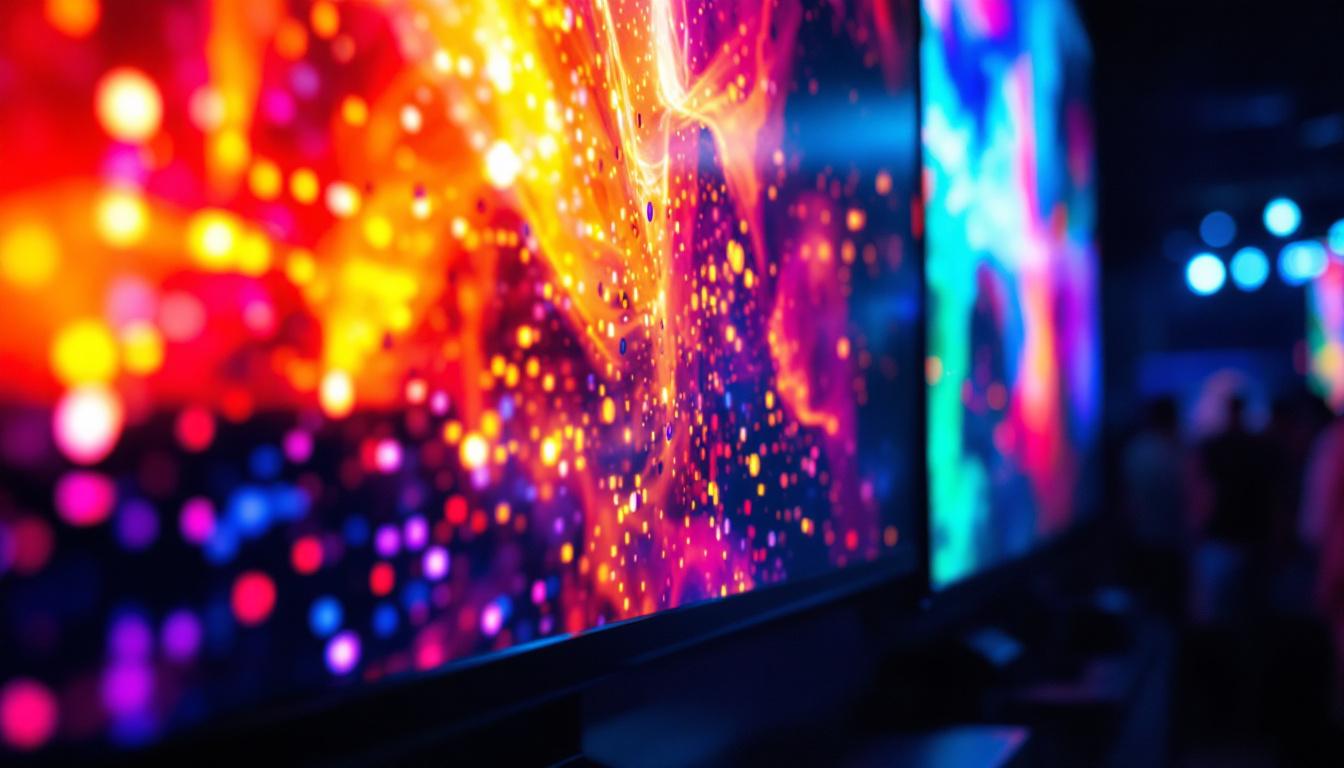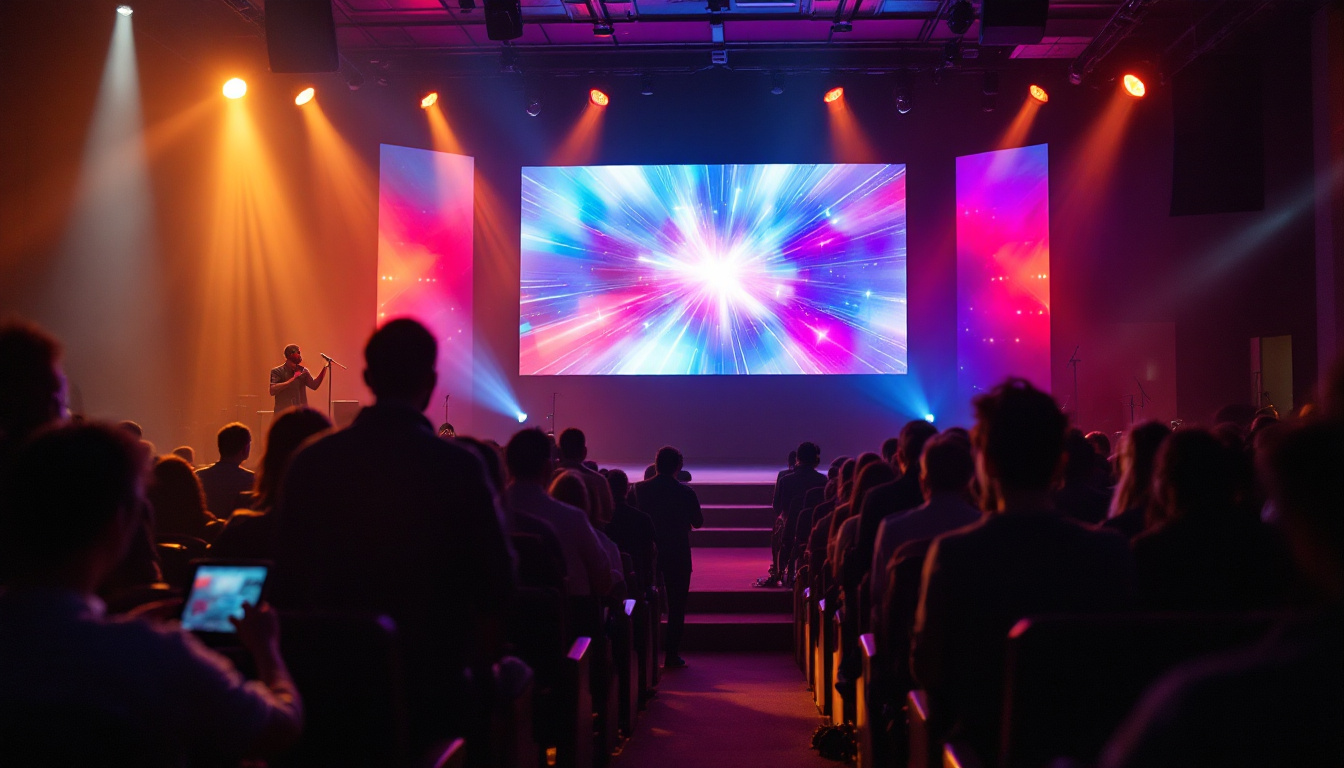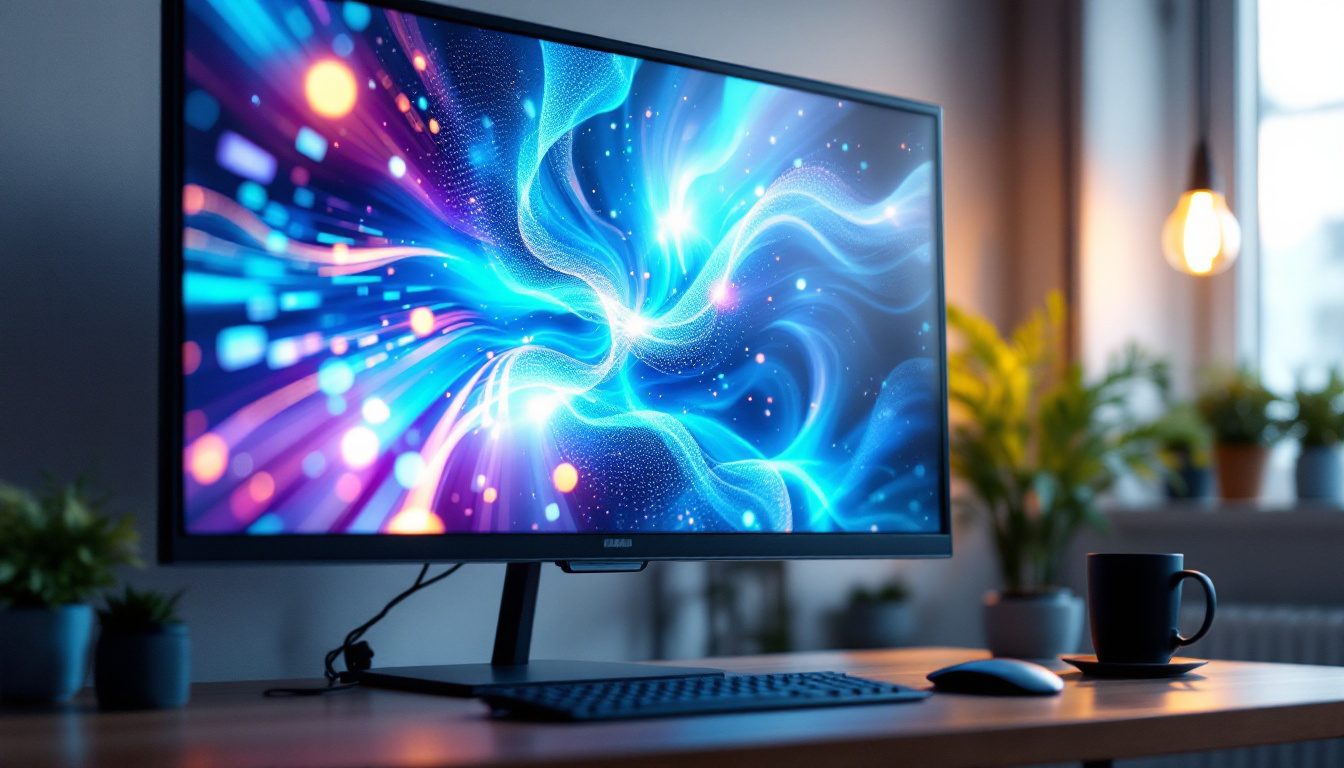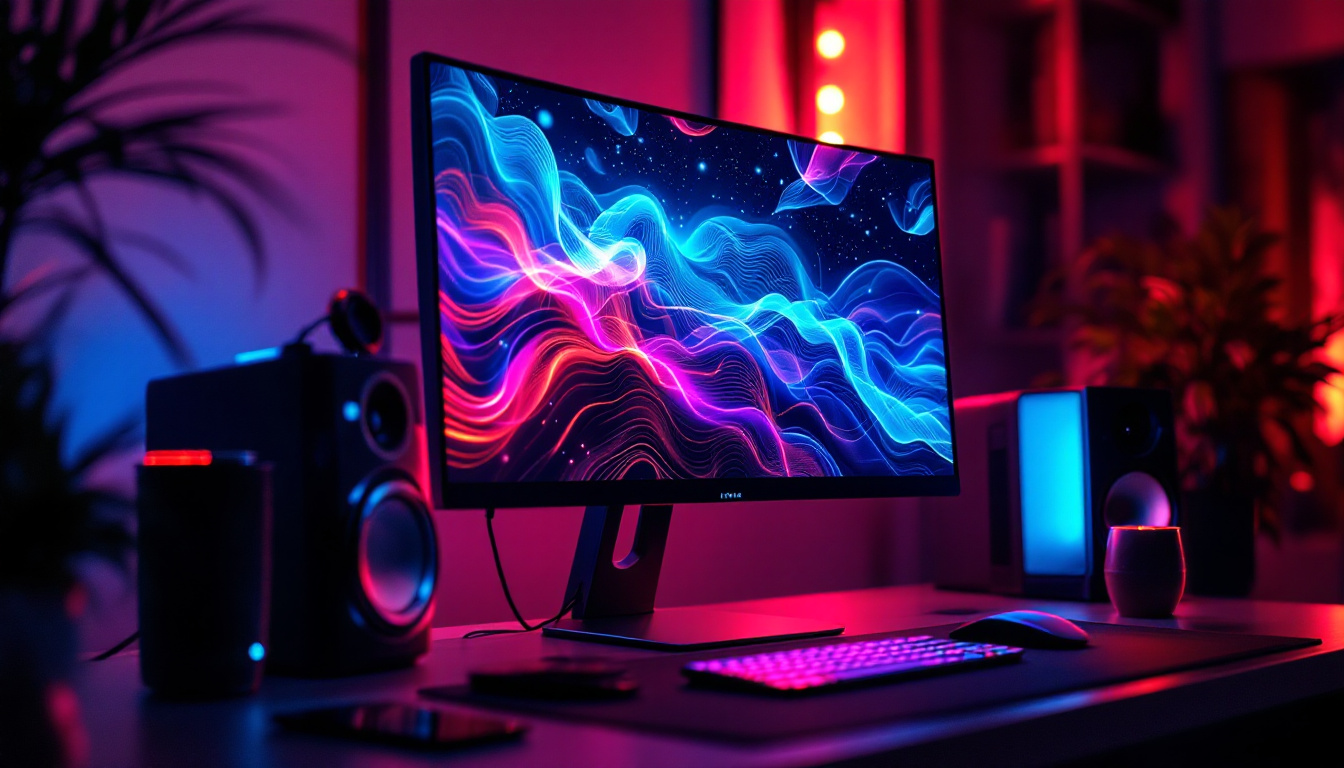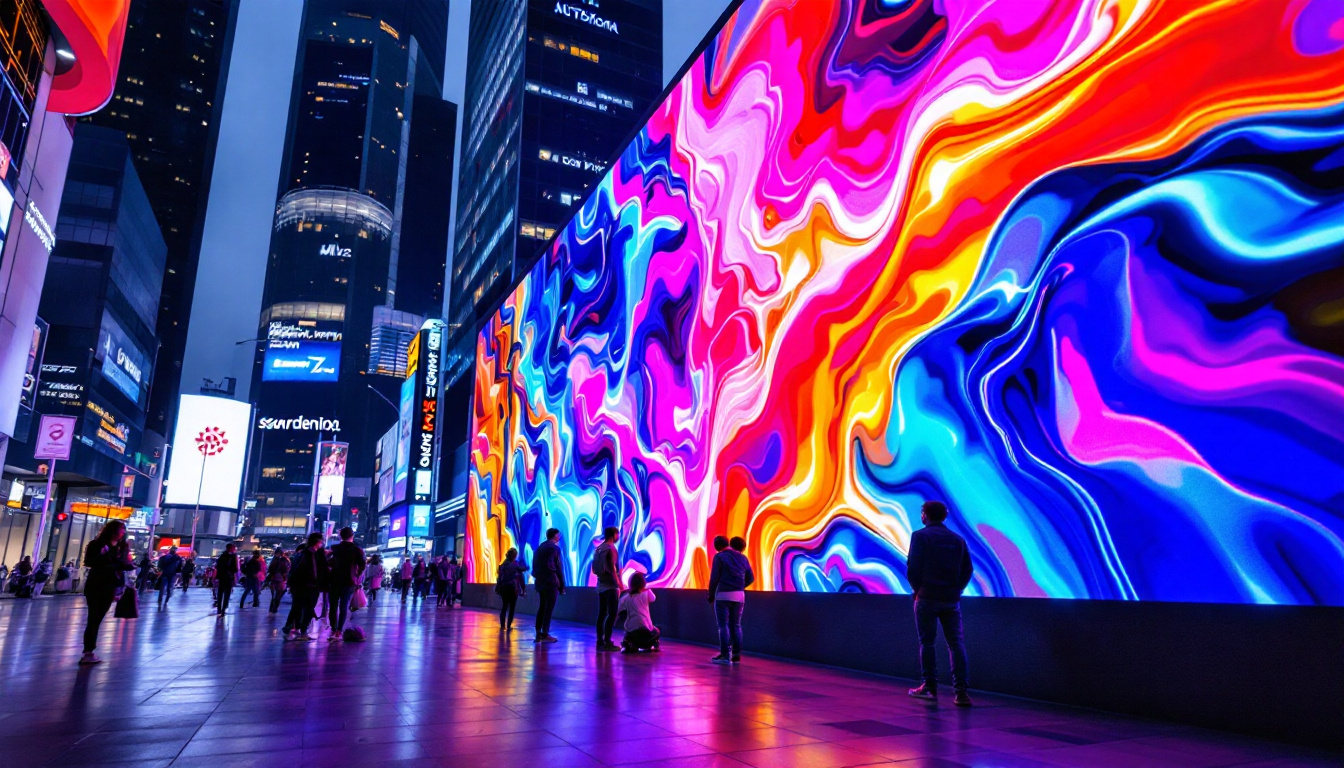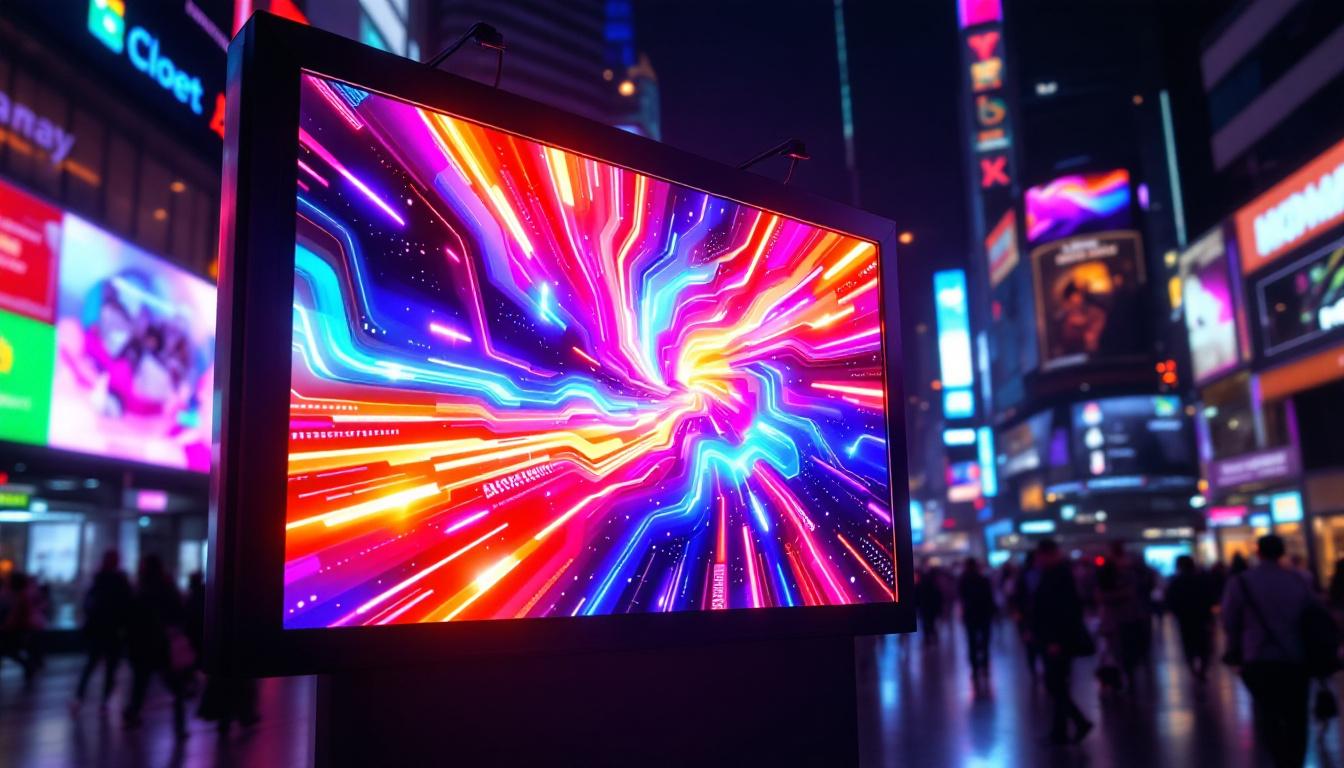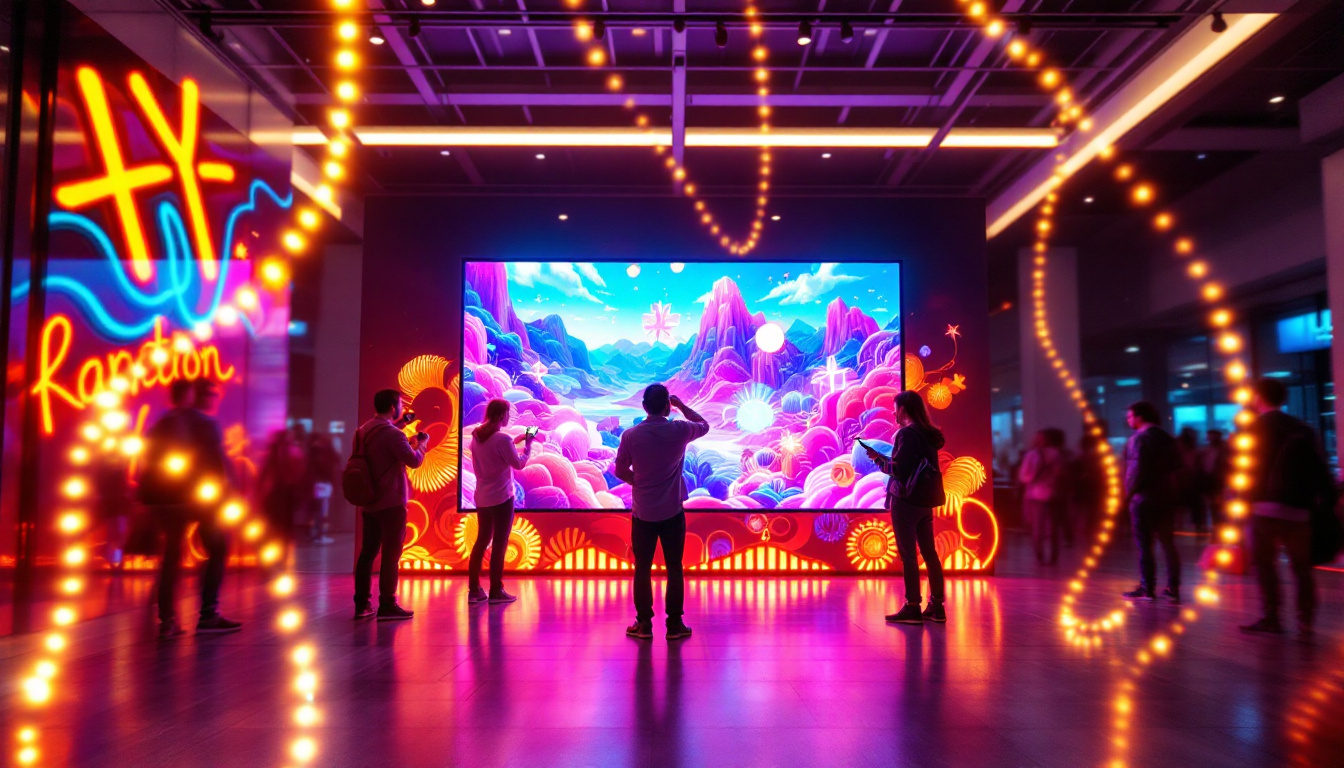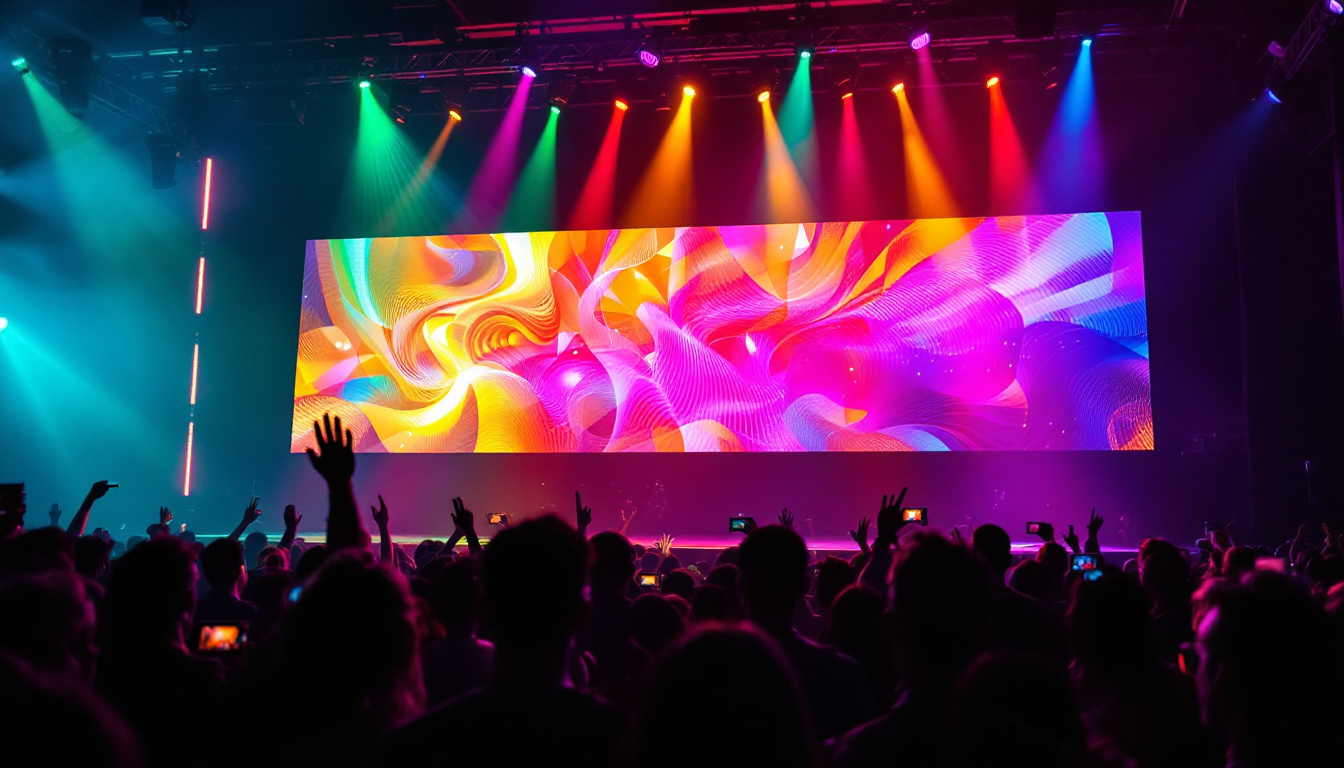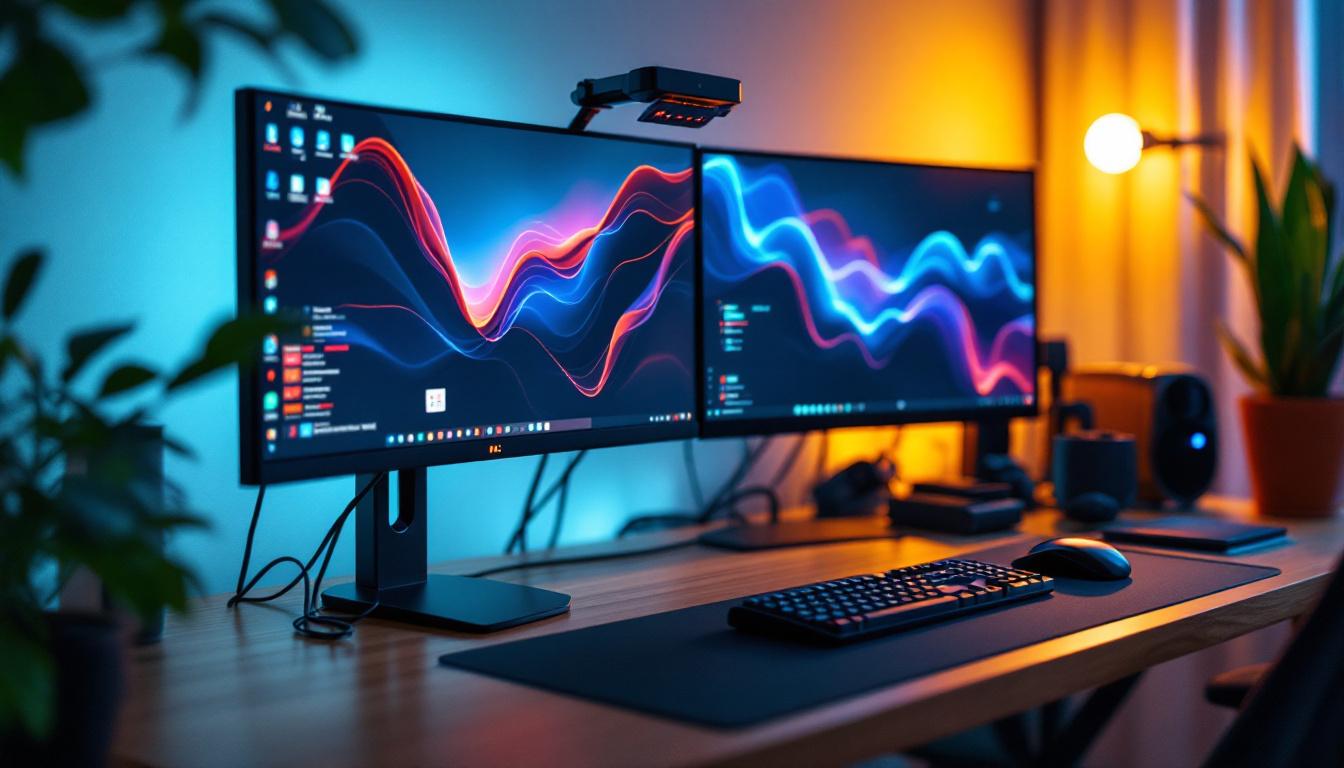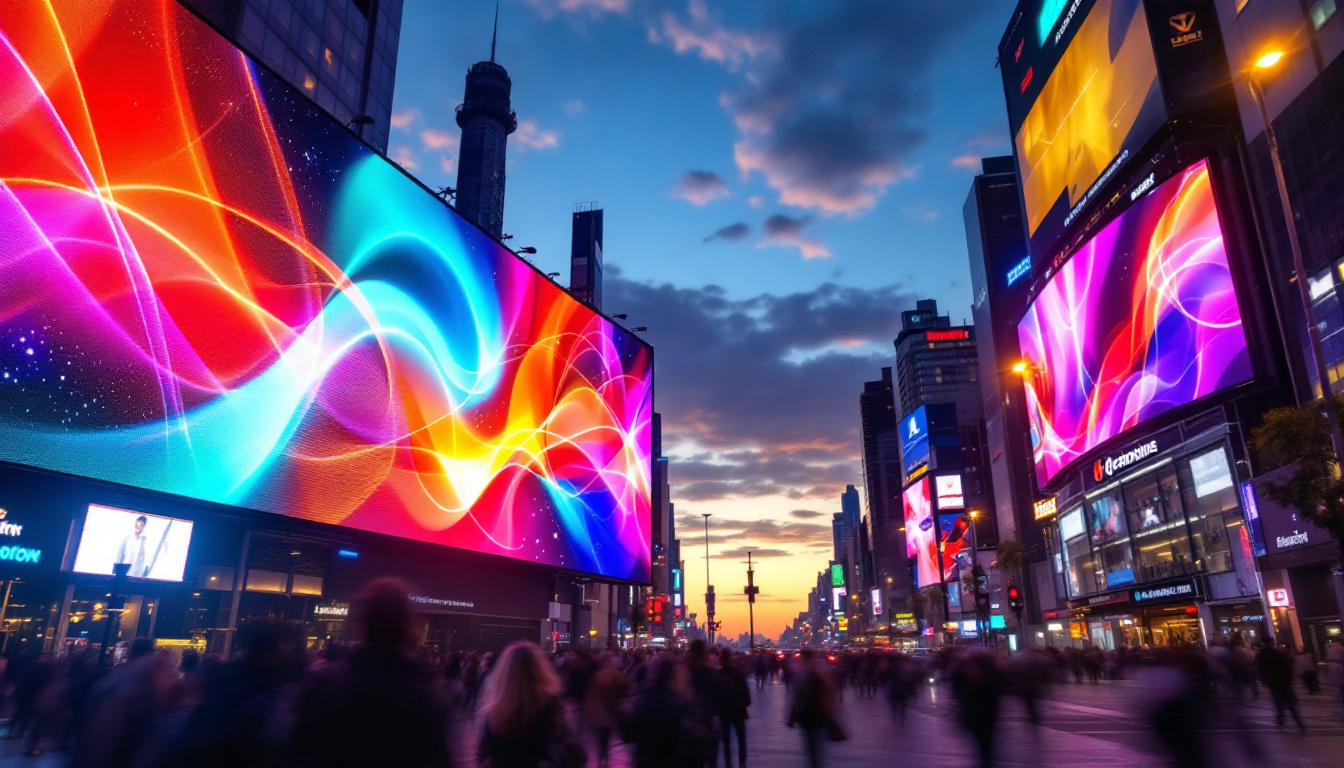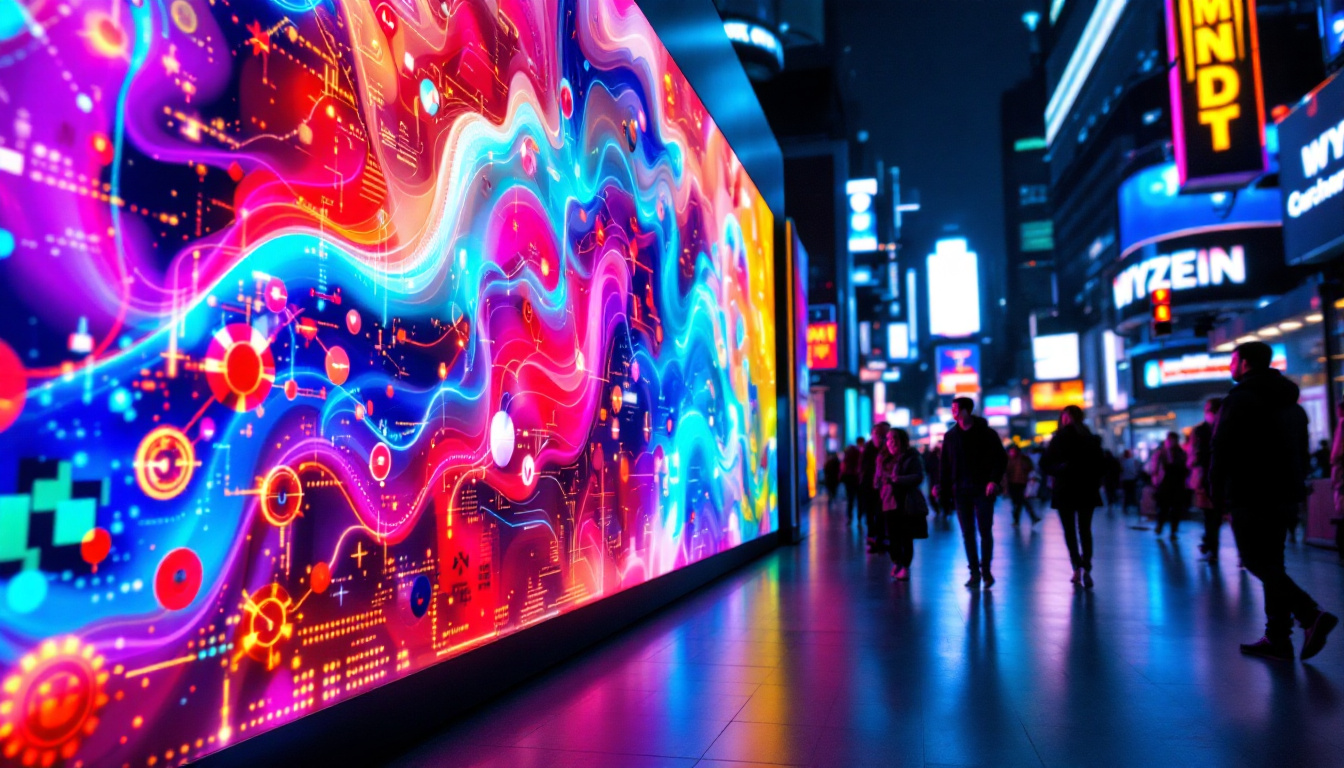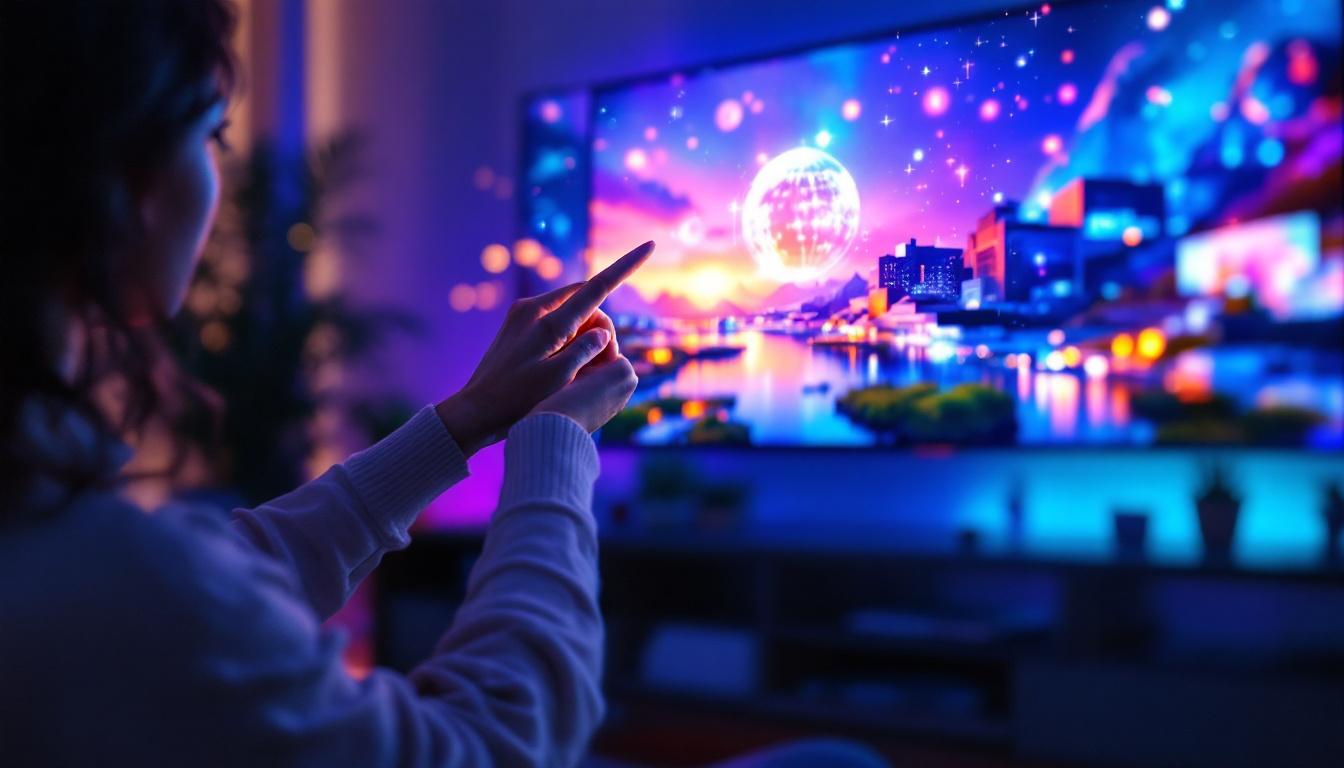In recent years, the world of art has undergone a significant transformation, thanks to advancements in technology. One of the most exciting developments in this realm is the emergence of interactive wall art, particularly through the use of LED displays. This innovative form of art not only captivates audiences but also allows for a dynamic interaction that traditional art forms cannot offer. This article delves into the intricacies of interactive wall art, exploring its features, benefits, and the technology behind LED displays.
Understanding Interactive Wall Art
Interactive wall art represents a fusion of creativity and technology, allowing viewers to engage with artwork in ways that were previously unimaginable. Unlike static pieces, interactive art invites participation, making the experience more immersive and personal. This engagement can take various forms, from touch-sensitive displays to motion-responsive installations.
The Essence of Interactivity
At the heart of interactive wall art is the concept of interactivity itself. This can manifest in numerous ways, such as:
- Touch Interaction: Viewers can manipulate the artwork through touch, altering colors, shapes, or animations.
- Motion Sensors: Art pieces that respond to movement create a unique experience, where the viewer’s actions directly influence the display.
- Sound Integration: Some installations incorporate audio elements that react to viewer engagement, enhancing the overall experience.
These interactive elements not only make the art more engaging but also encourage viewers to form a deeper connection with the piece. This connection can lead to a greater appreciation of the artwork and the message it conveys.
Types of Interactive Wall Art
Interactive wall art can be categorized into several types, each utilizing LED technology in unique ways:
- Digital Murals: Large-scale LED displays that showcase vibrant images or animations, often changing in real-time based on viewer interaction.
- Projection Mapping: This technique uses projectors to display images on various surfaces, creating an illusion of depth and movement.
- Interactive Screens: Touch-sensitive screens that allow users to navigate through different artworks or information, providing a personalized experience.
Each type of interactive wall art offers a distinct experience, catering to different audiences and settings, from galleries to public spaces.
The Technology Behind LED Displays
LED (Light Emitting Diode) technology is the backbone of interactive wall art. Understanding how this technology works is essential to appreciate its capabilities and potential.
How LED Displays Function
LED displays consist of numerous tiny light-emitting diodes that work together to create images. These diodes can produce a wide range of colors, allowing for vibrant and dynamic displays. The technology operates on a pixel-based system, where each pixel can be individually controlled to create intricate designs and animations.
The advantages of LED displays include:
- Brightness: LEDs are known for their brightness, making them suitable for various lighting conditions.
- Energy Efficiency: LED technology consumes less power compared to traditional lighting systems, making it a more sustainable option.
- Longevity: LED displays have a longer lifespan, reducing the need for frequent replacements.
Integration with Interactive Technology
To create interactive experiences, LED displays are often integrated with various technologies. This integration can include:
- Touch Sensors: These sensors detect user interaction, allowing the display to respond accordingly.
- Software Platforms: Specialized software enables the creation of interactive content, allowing artists to design experiences that engage viewers.
- Networking Capabilities: Some installations can connect to the internet, allowing for real-time updates and remote control.
This combination of LED technology and interactive elements creates a canvas that is not only visually appealing but also responsive to the audience’s actions.
Benefits of Interactive Wall Art
The rise of interactive wall art has brought numerous benefits to both artists and audiences. These advantages extend beyond mere aesthetics, impacting the way art is perceived and experienced.
Enhanced Engagement
One of the most significant benefits of interactive wall art is the enhanced engagement it fosters. Traditional art can sometimes create a passive experience, where viewers simply observe. In contrast, interactive installations invite participation, encouraging viewers to become active participants in the artistic process.
This engagement can lead to:
- Increased Emotional Connection: When viewers interact with art, they often form a stronger emotional bond with the piece, leading to a more profound appreciation of its meaning.
- Memorable Experiences: Interactive art creates memorable experiences that can be shared and discussed, enhancing the social aspect of art appreciation.
- Broader Accessibility: Interactive elements can make art more accessible to diverse audiences, including those who may not typically engage with traditional forms.
Opportunities for Artists
For artists, interactive wall art opens up a world of creative possibilities. The integration of technology allows for experimentation and innovation, enabling artists to push the boundaries of their craft. Some opportunities include:
- New Mediums: Artists can explore digital mediums, creating works that blend traditional techniques with modern technology.
- Collaboration: The interactive nature of these artworks often encourages collaboration between artists, technologists, and designers.
- Expanded Reach: Interactive art can reach wider audiences through social media and online platforms, allowing artists to showcase their work to a global audience.
Applications of Interactive Wall Art
The versatility of interactive wall art has led to its adoption in various settings, each benefiting from the unique engagement it offers. From public spaces to private collections, the applications are diverse and impactful.
Public Spaces and Installations
Interactive wall art has found a prominent place in public spaces, such as parks, museums, and galleries. These installations serve various purposes, including:
- Education: Interactive displays in museums can enhance learning experiences, allowing visitors to engage with historical or scientific content in an interactive manner.
- Community Engagement: Public art installations can foster community involvement, encouraging local residents to participate in the creation or interaction with the art.
- Tourism: Unique interactive installations can attract tourists, providing a draw for visitors seeking novel experiences.
Corporate and Commercial Use
Businesses are increasingly recognizing the value of interactive wall art in enhancing brand identity and customer engagement. Applications in this sector include:
- brand storytelling: Companies can use interactive displays to tell their brand story, engaging customers in a memorable way.
- Advertising: Dynamic LED displays can be used for advertising campaigns, capturing attention with vibrant visuals and interactivity.
- Event Experiences: Interactive art can enhance corporate events, creating unique experiences that leave a lasting impression on attendees.
Challenges and Considerations
While interactive wall art offers numerous benefits, it is not without its challenges. Artists, curators, and organizations must navigate various considerations to ensure successful installations.
Technical Limitations
The technology behind interactive wall art is continually evolving, but there are still technical limitations to consider. These can include:
- Cost: High-quality LED displays and the necessary technology can be expensive, making it a significant investment for artists and organizations.
- Maintenance: Interactive installations may require regular maintenance and updates to ensure optimal performance.
- Technical Skills: Artists may need to acquire new technical skills or collaborate with technologists to create and maintain interactive experiences.
Audience Engagement
While interactivity can enhance engagement, it can also pose challenges. Not all audiences may feel comfortable interacting with art, leading to potential barriers. To address this, artists and curators can:
- Provide Clear Instructions: Ensuring that viewers understand how to interact with the artwork can enhance participation.
- Create Inclusive Experiences: Designing installations that cater to diverse audiences can help foster engagement across various demographics.
- Gather Feedback: Collecting audience feedback can provide valuable insights for improving future installations.
The Future of Interactive Wall Art
The future of interactive wall art is bright, with technology continuing to advance and new creative possibilities emerging. As artists and technologists collaborate, the potential for innovative experiences is limitless.
Emerging Technologies
As technology evolves, new tools and platforms are likely to emerge, further enhancing the capabilities of interactive wall art. Some trends to watch include:
- Augmented Reality (AR): AR technology can overlay digital elements onto the physical world, creating even more immersive experiences.
- Artificial Intelligence (AI): AI can enable dynamic interactions that adapt to individual viewer preferences, personalizing the experience.
- Wearable Technology: The integration of wearables could allow for even more personalized interactions, creating a seamless connection between the viewer and the artwork.
Redefining Artistic Expression
As interactive wall art continues to gain traction, it is likely to redefine the boundaries of artistic expression. Artists will have the opportunity to explore new narratives and engage with audiences in innovative ways. This evolution may lead to:
- Cross-Disciplinary Collaborations: Artists may collaborate with scientists, engineers, and technologists to create groundbreaking installations.
- New Art Forms: The fusion of technology and art could give rise to entirely new genres and styles, expanding the possibilities of creative expression.
- A Shift in Art Consumption: As audiences become accustomed to interactive experiences, traditional forms of art may be re-evaluated, leading to a broader understanding of what art can be.
Conclusion
Interactive wall art, powered by LED displays, represents a remarkable evolution in the art world. By merging technology with creativity, artists can create engaging experiences that resonate with audiences on a deeper level. As this field continues to grow, it promises to redefine the way art is perceived, experienced, and appreciated. The future holds endless possibilities for interactive wall art, making it an exciting area to watch as technology and artistic expression continue to intertwine.
Discover the Future of Interactive Displays with LumenMatrix
Ready to immerse yourself in the next generation of interactive wall art? LumenMatrix is at the forefront of LED display technology, offering an array of solutions that bring your creative visions to life. From Indoor and Outdoor LED Wall Displays to innovative LED Sports and Transparent Displays, our products are designed to captivate and engage. Experience the transformative power of LED art installations and elevate your space with our cutting-edge displays. Check out LumenMatrix LED Display Solutions today and join the revolution in visual communication.

